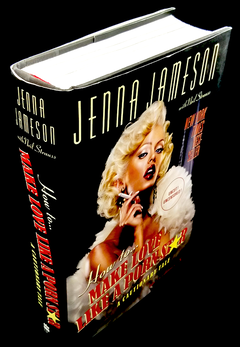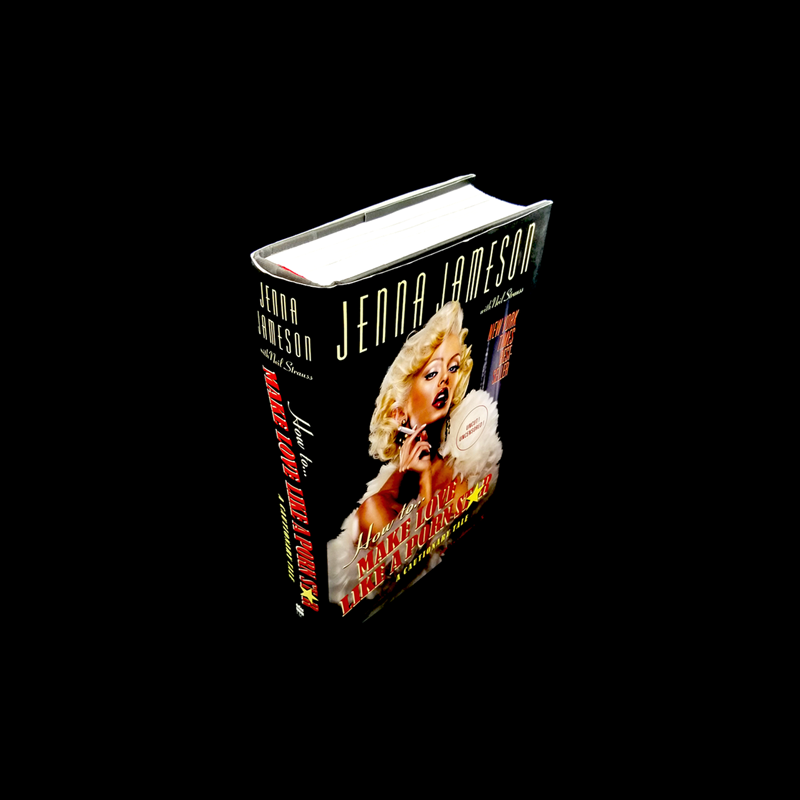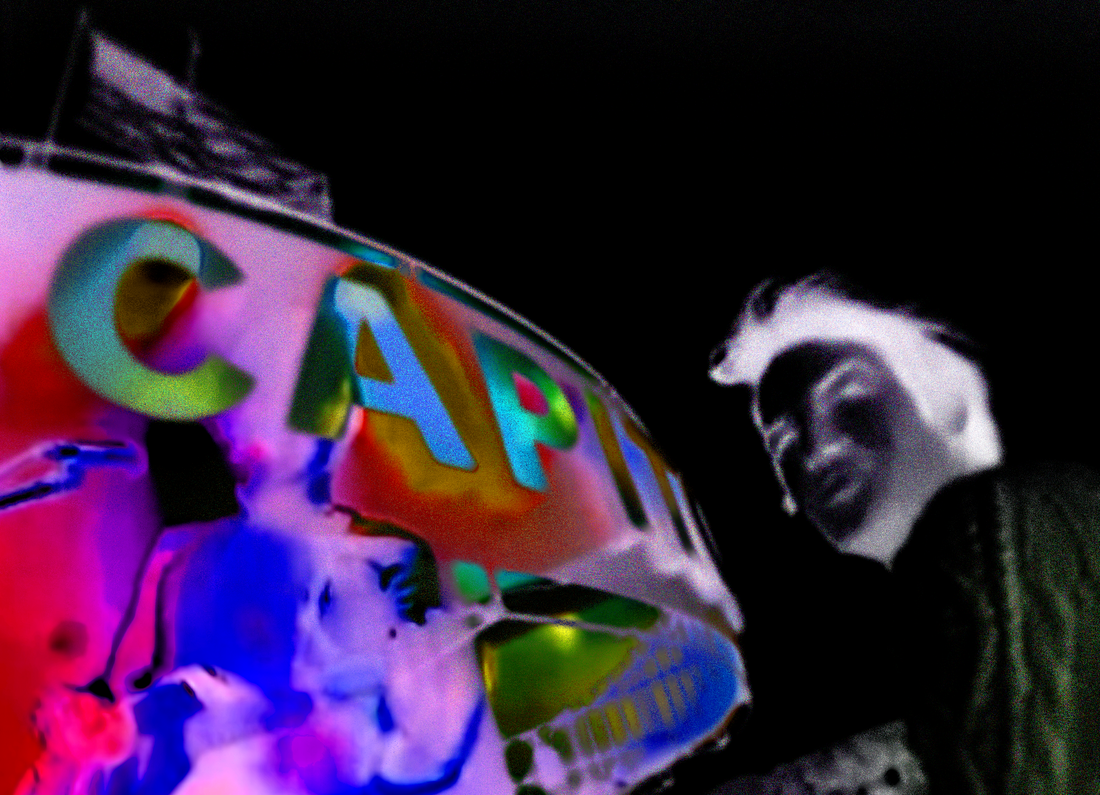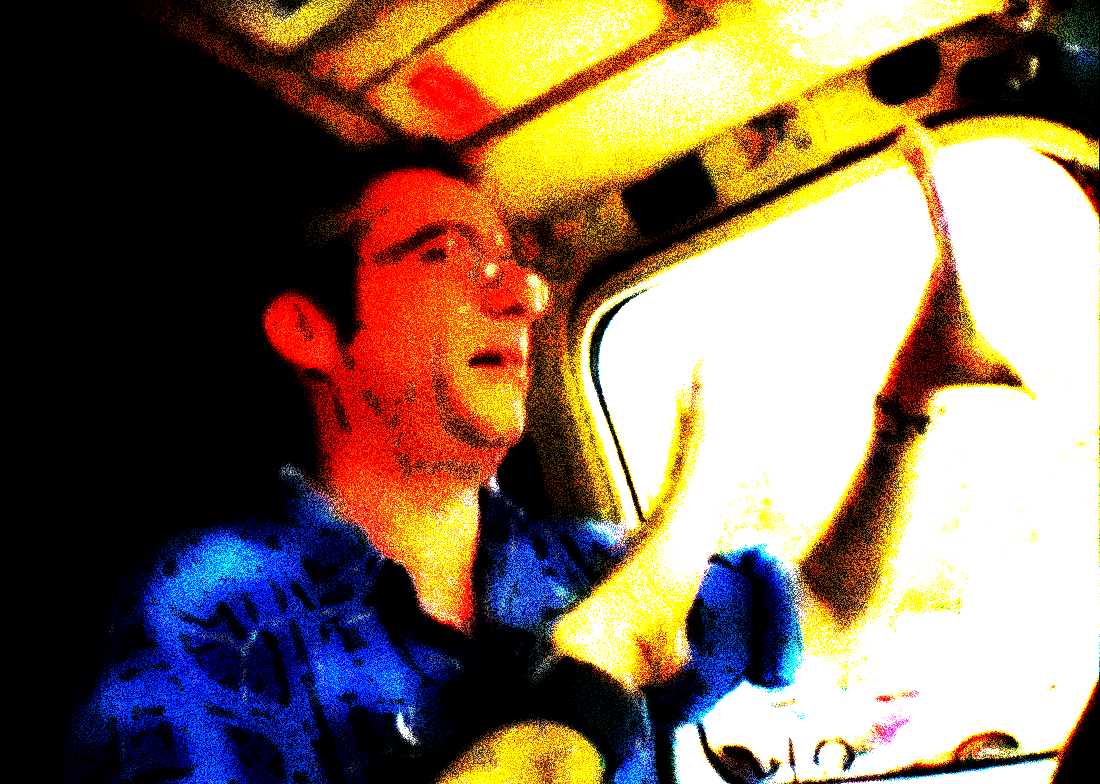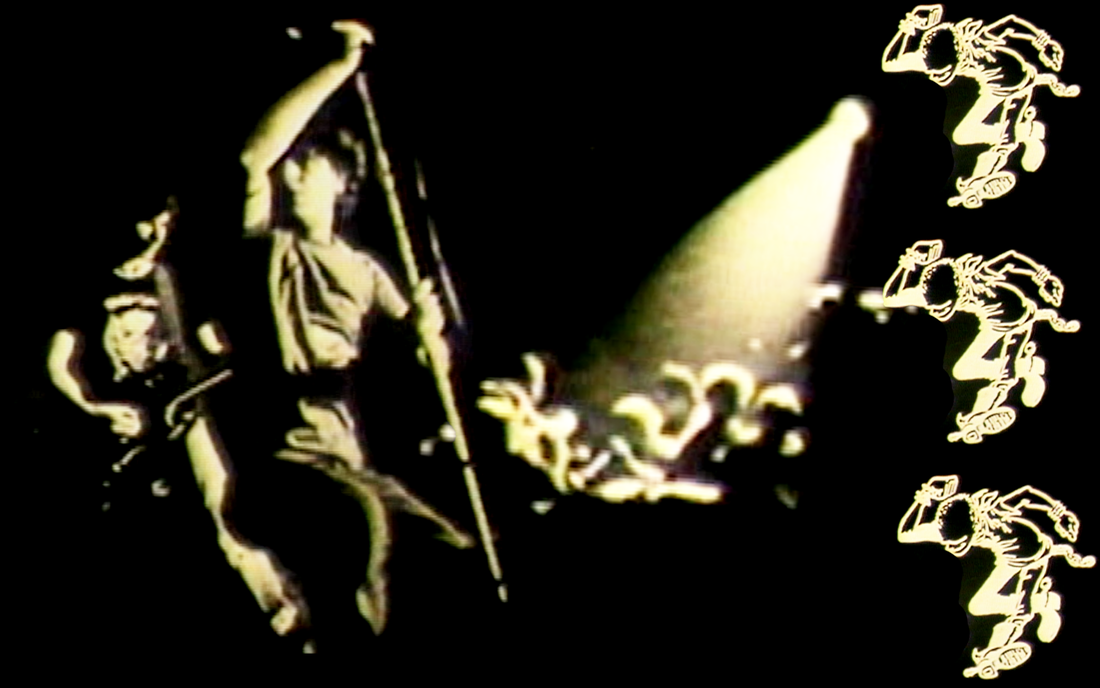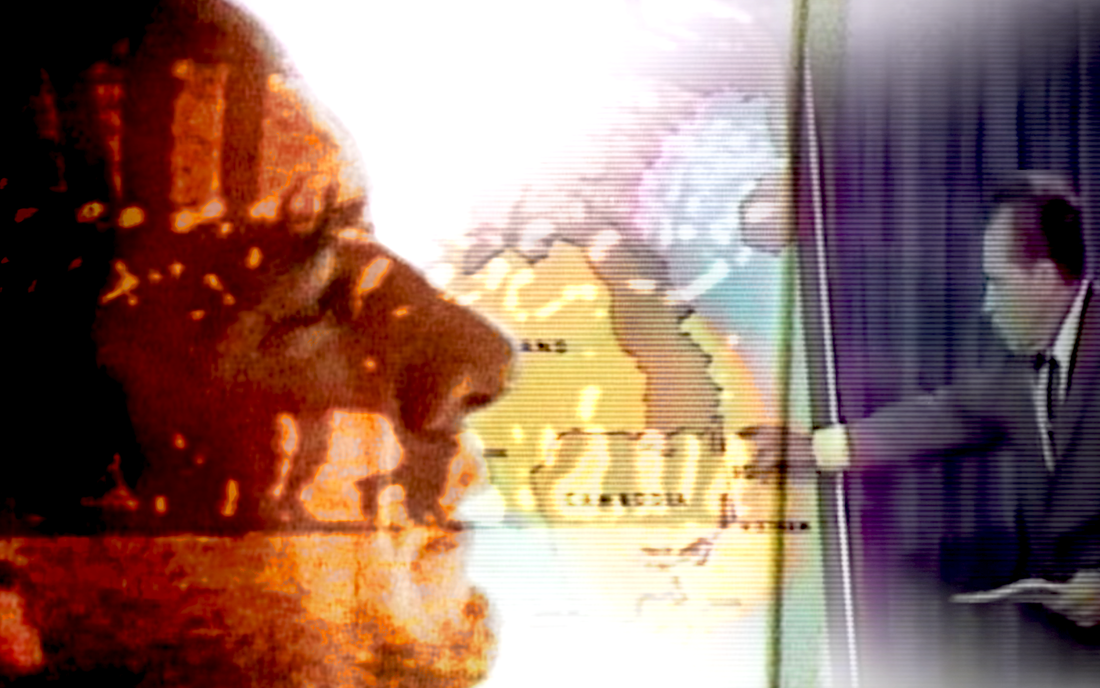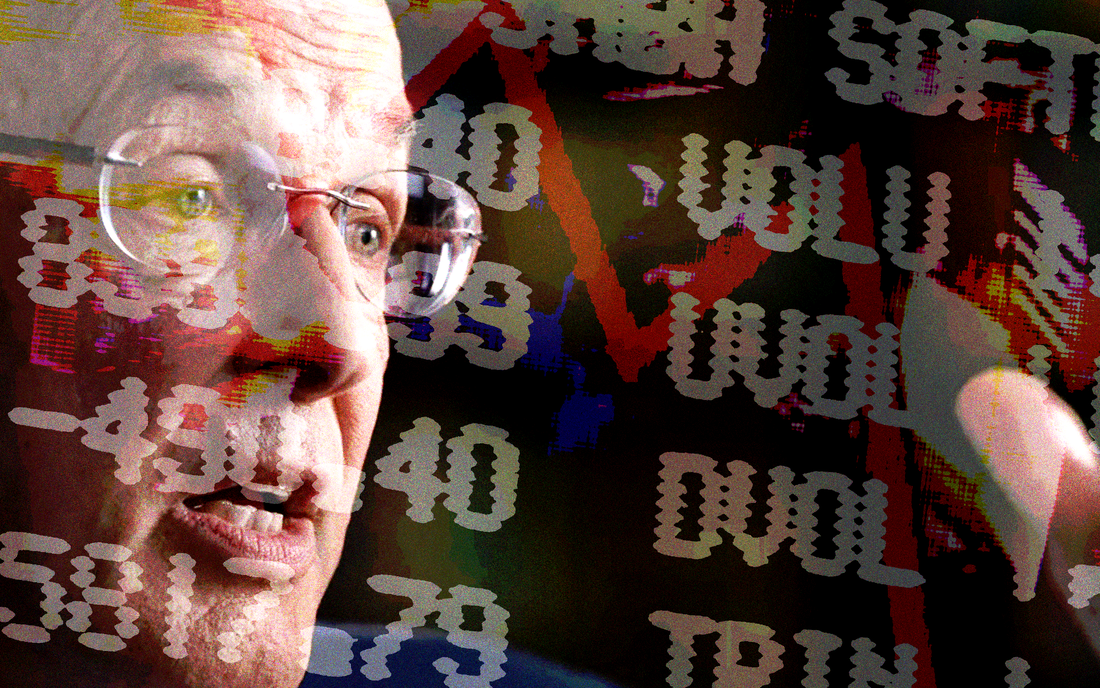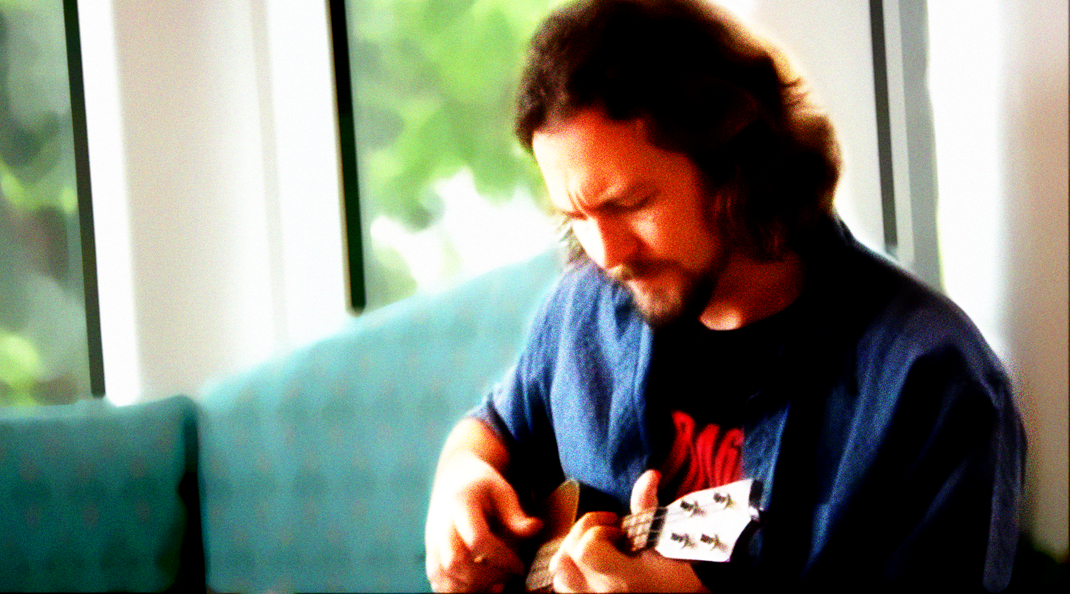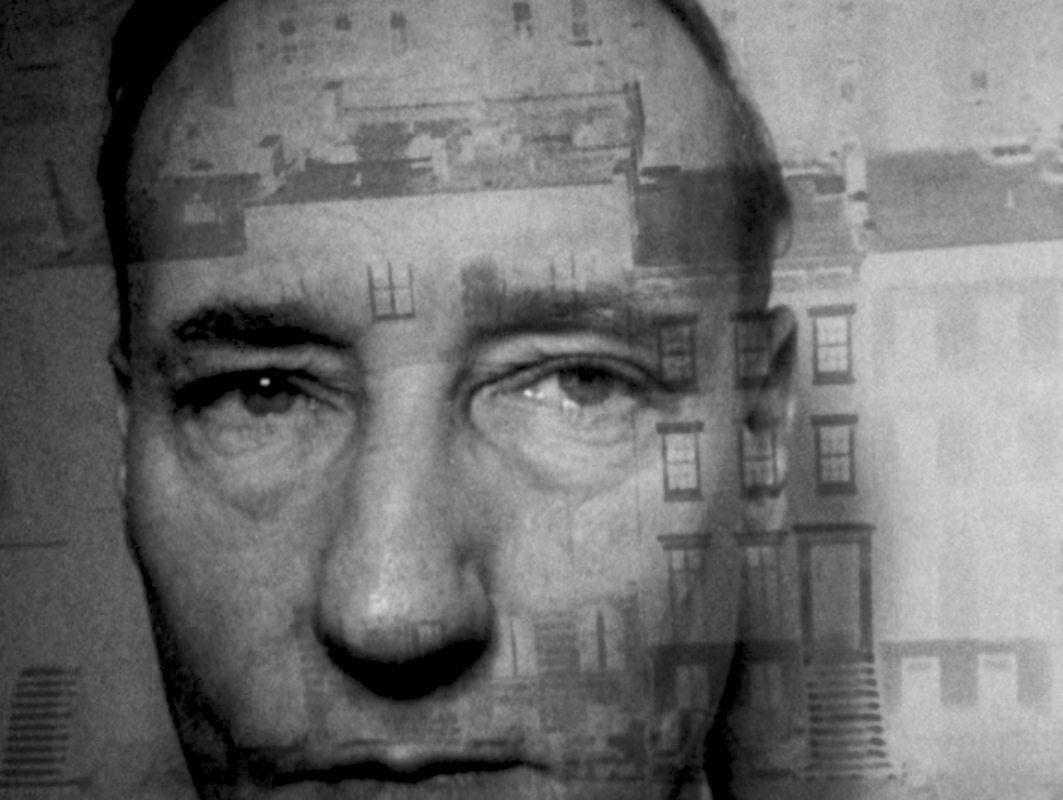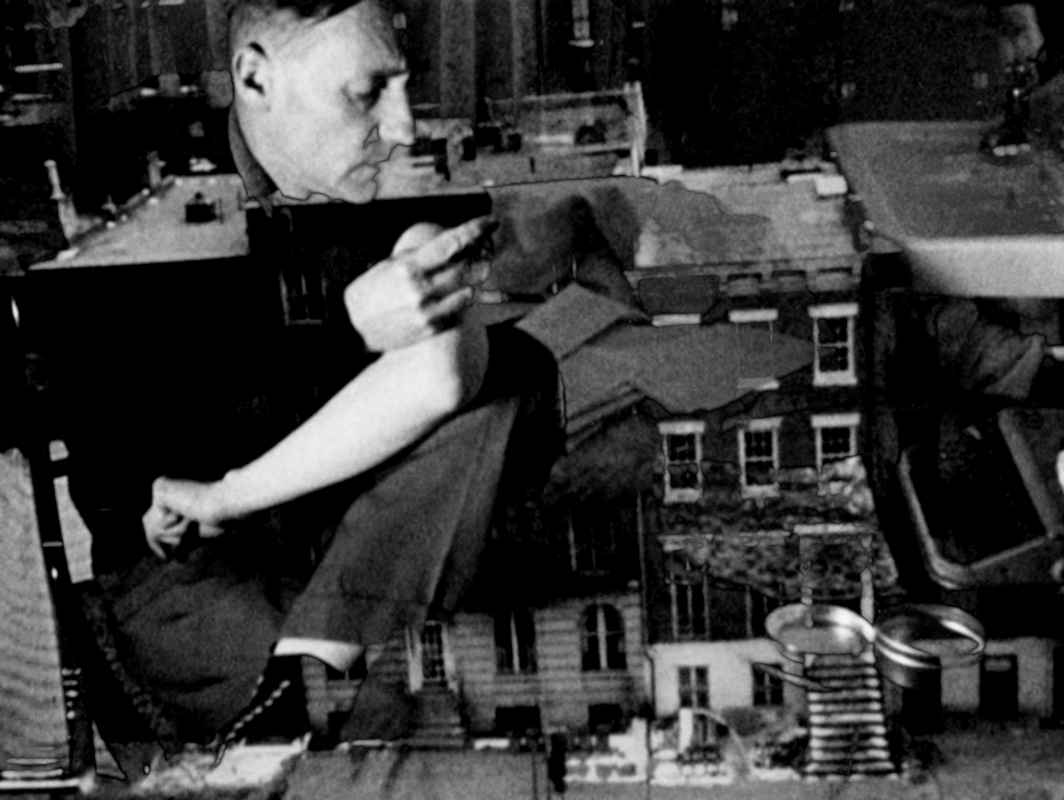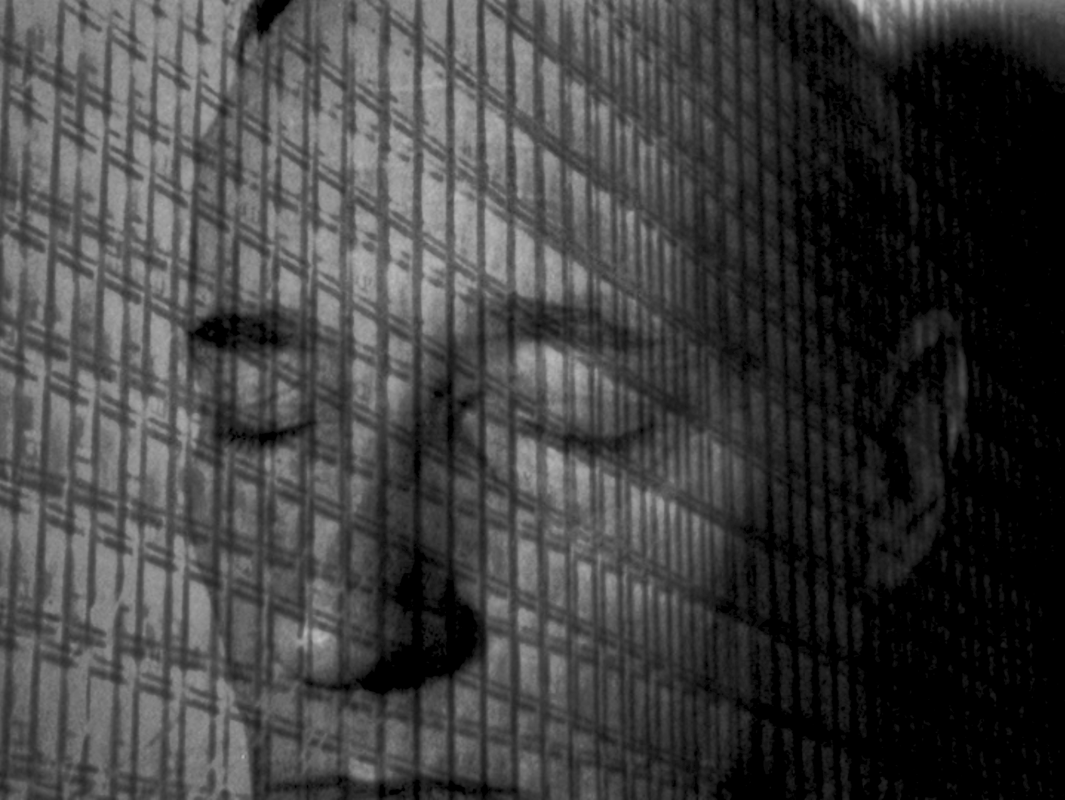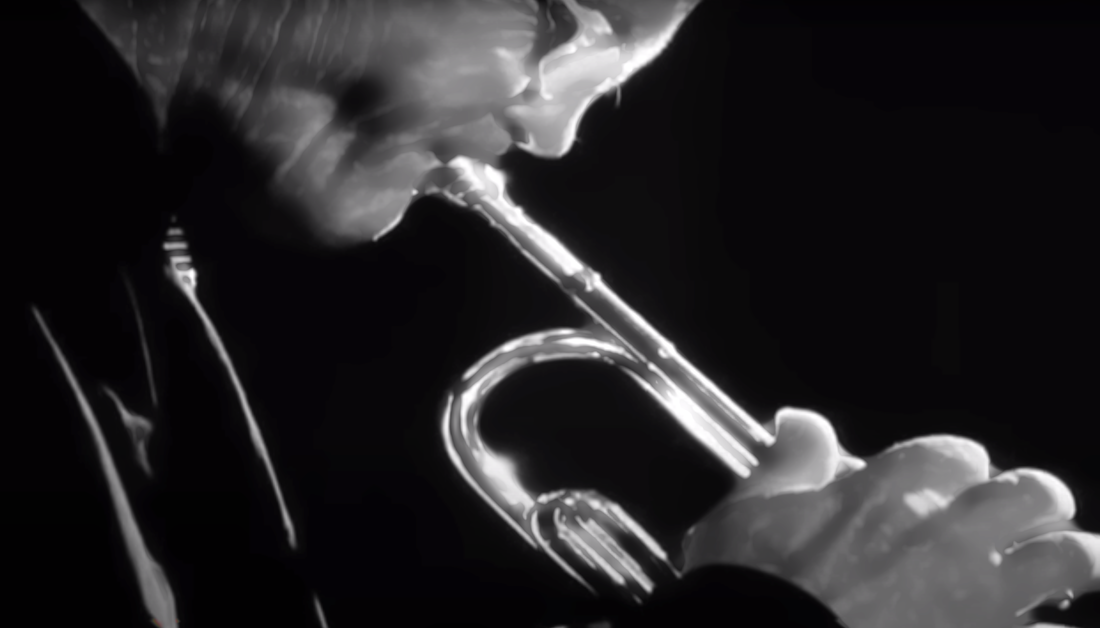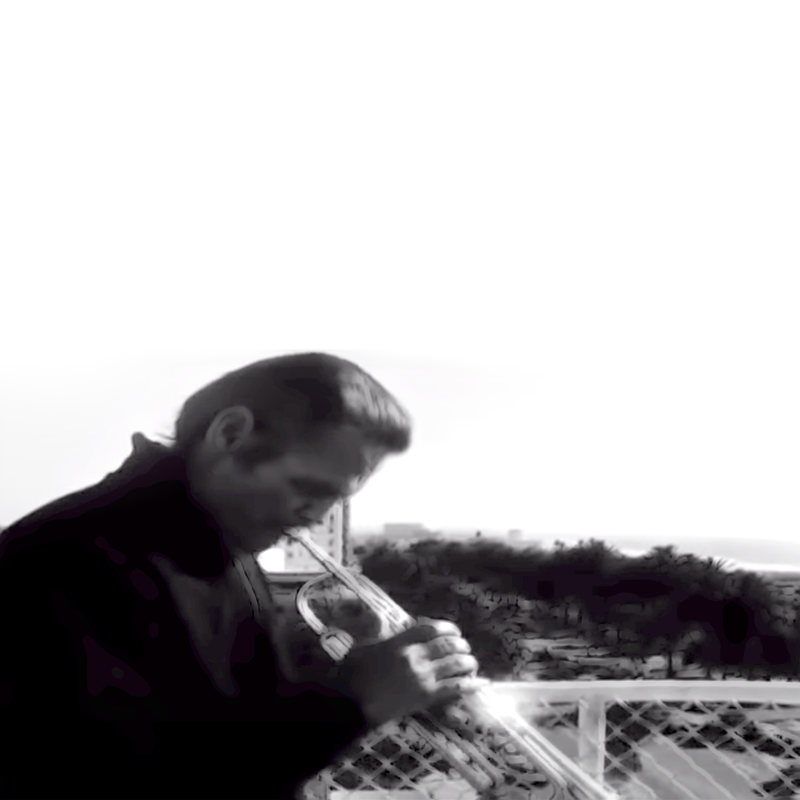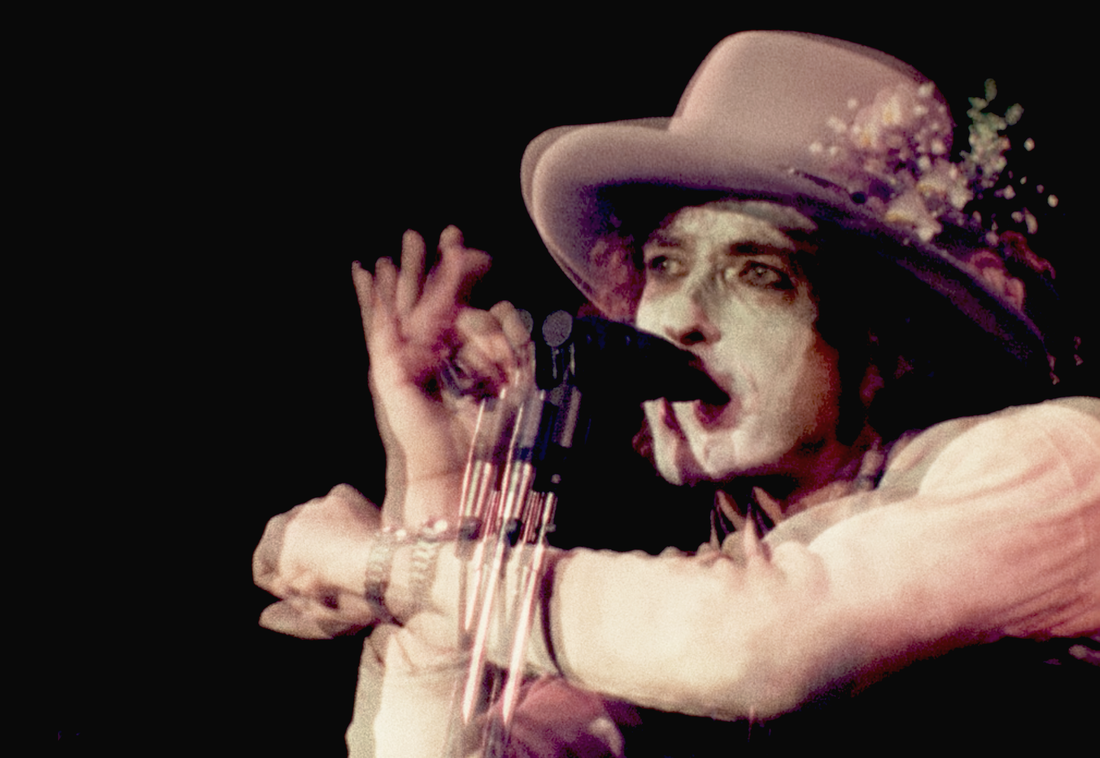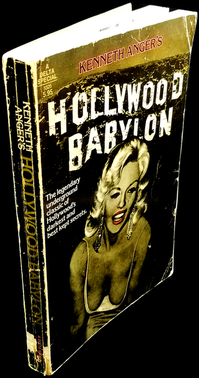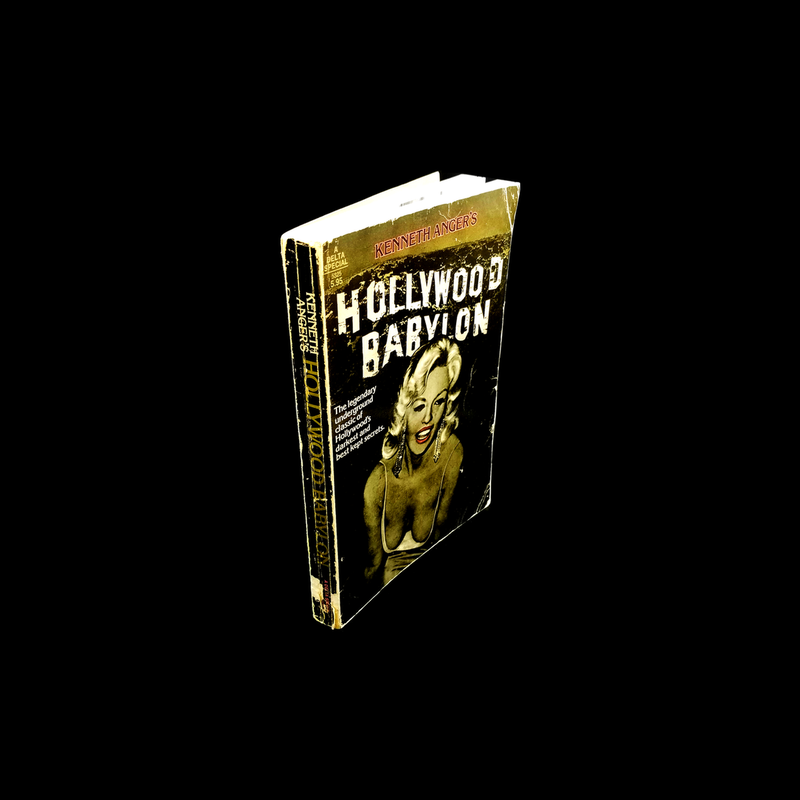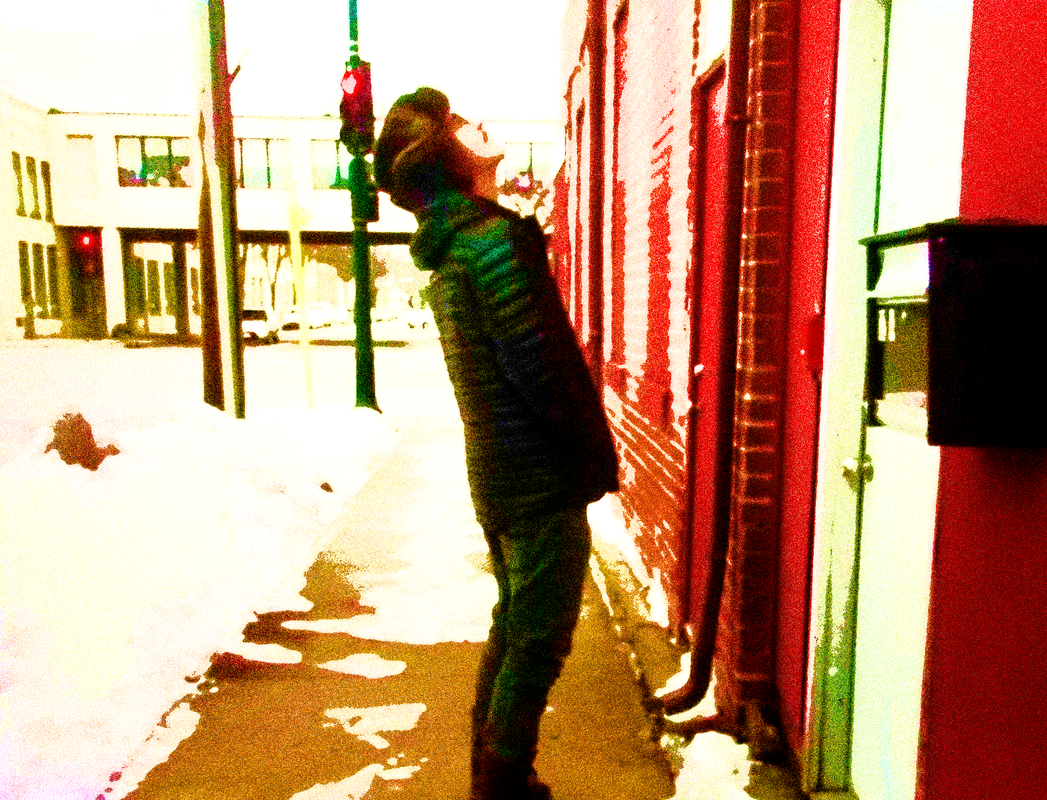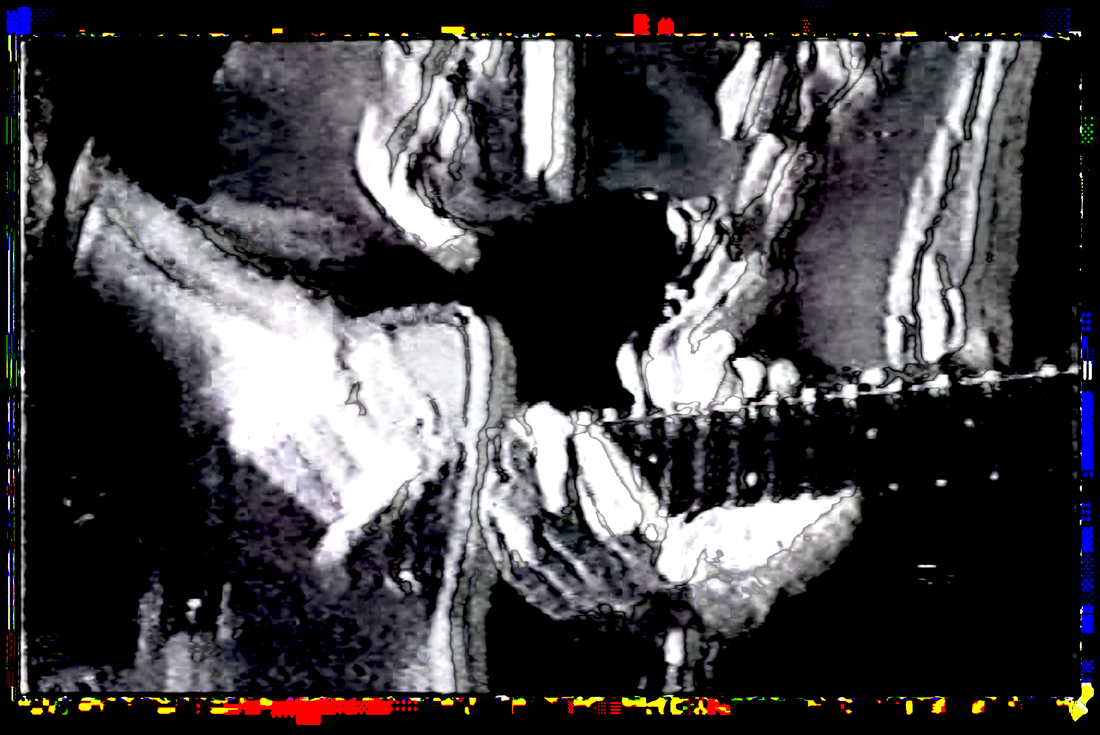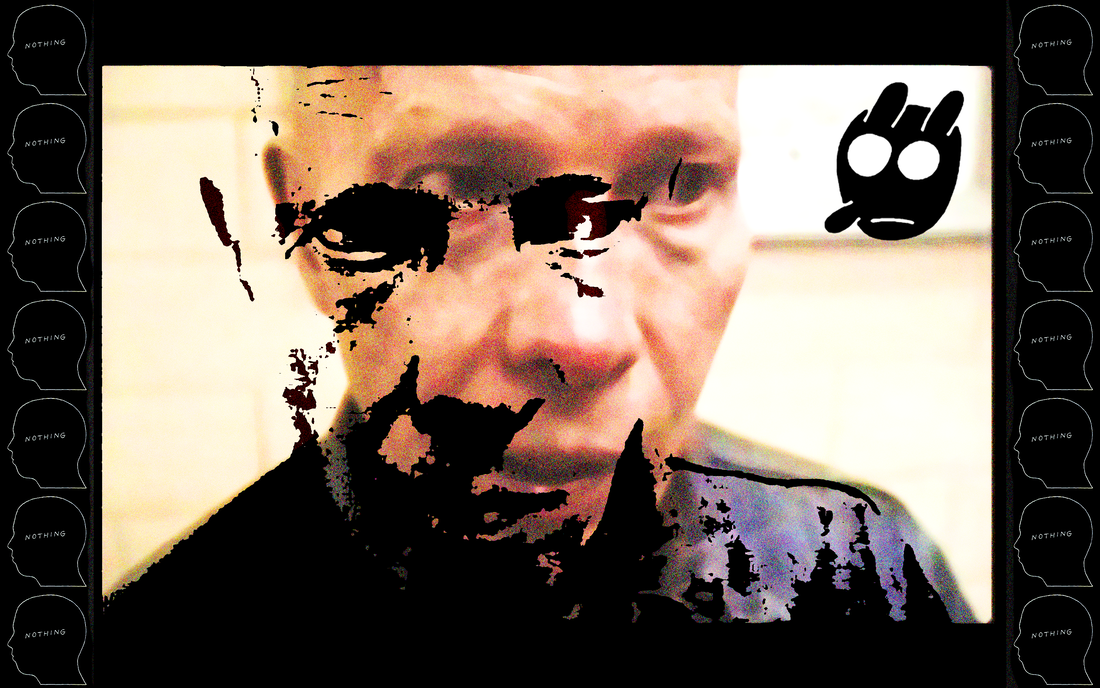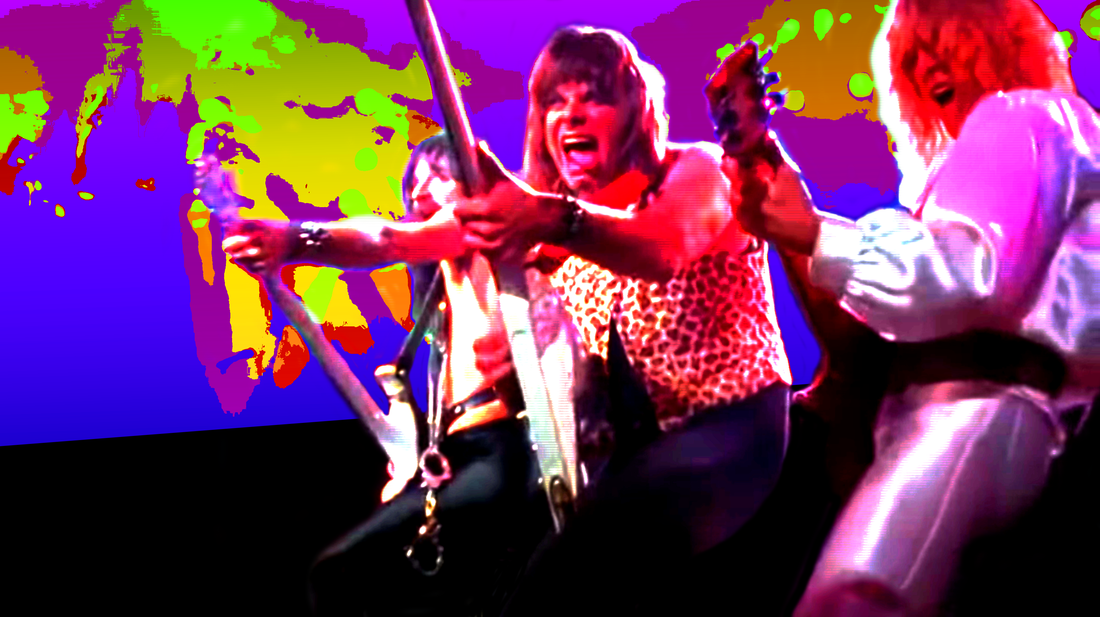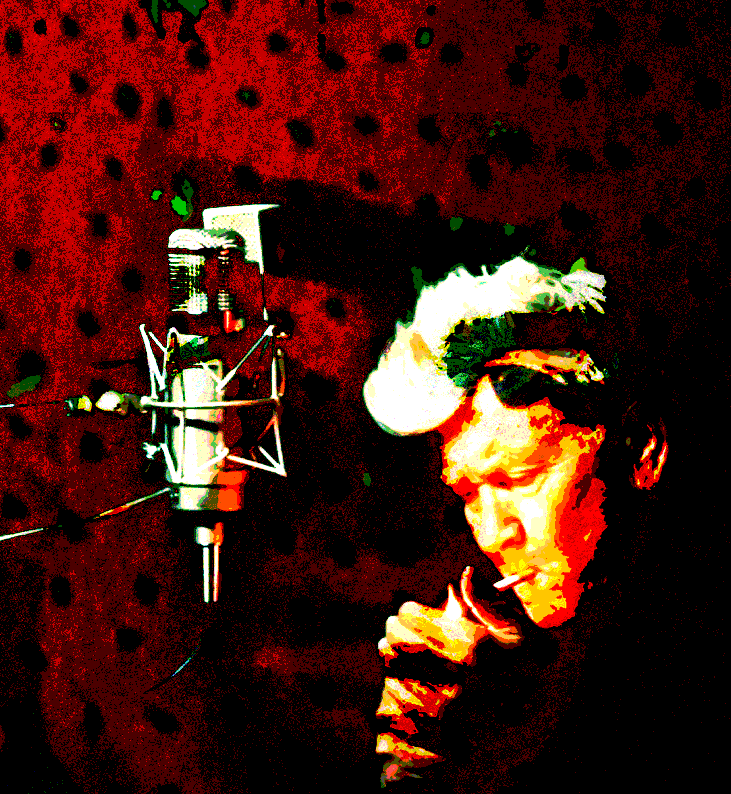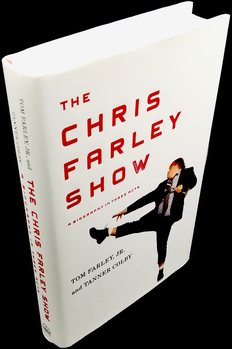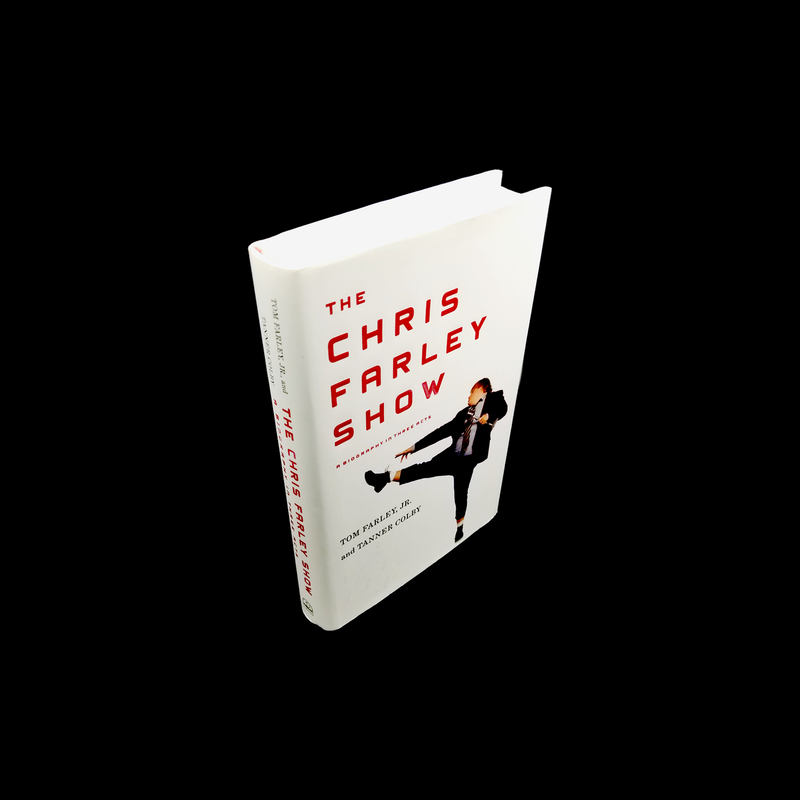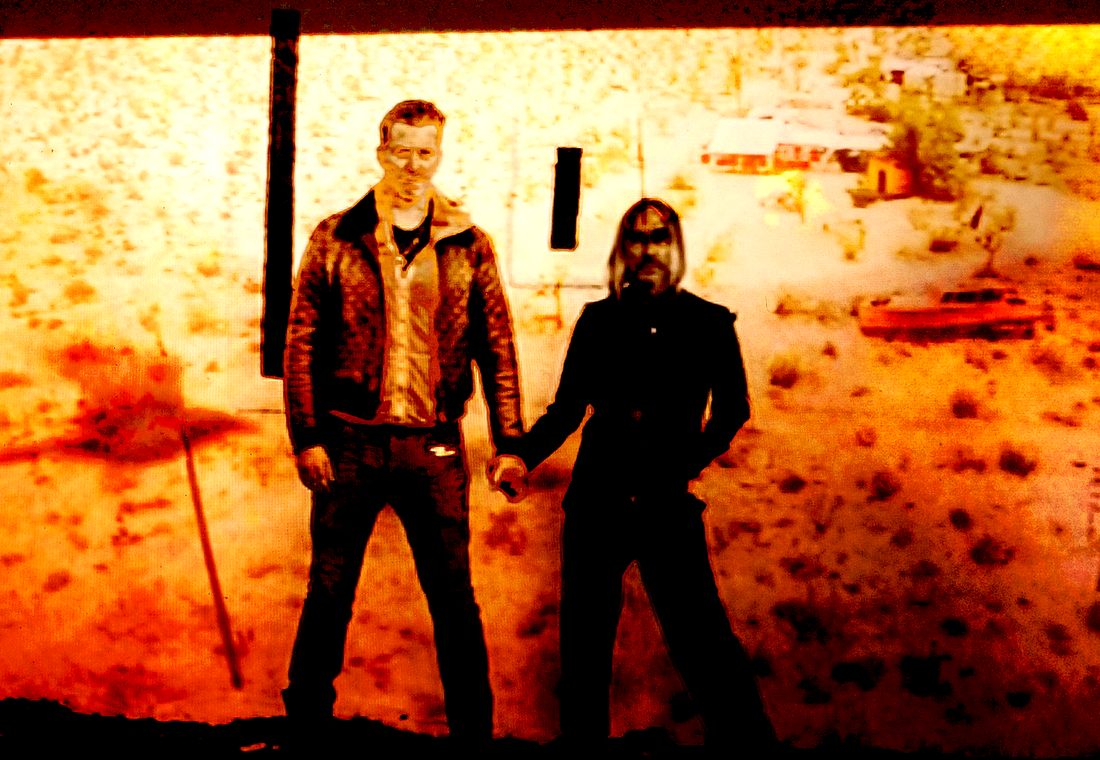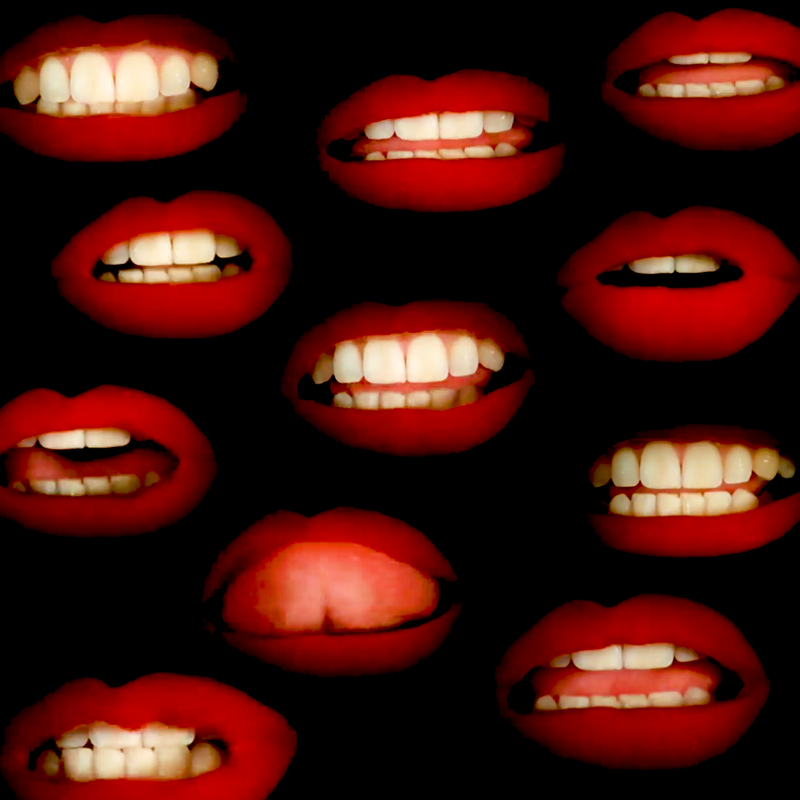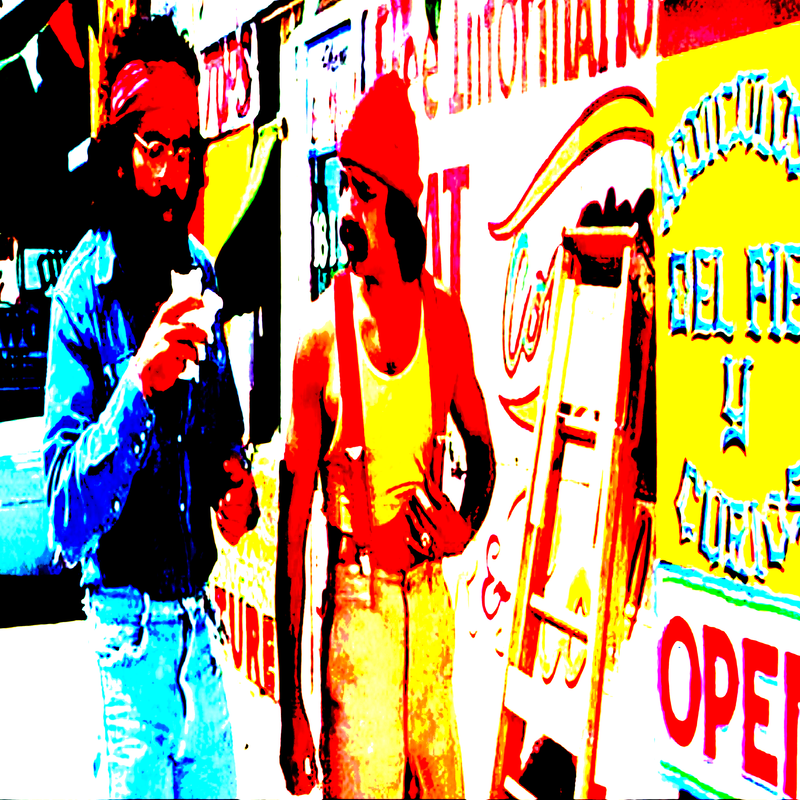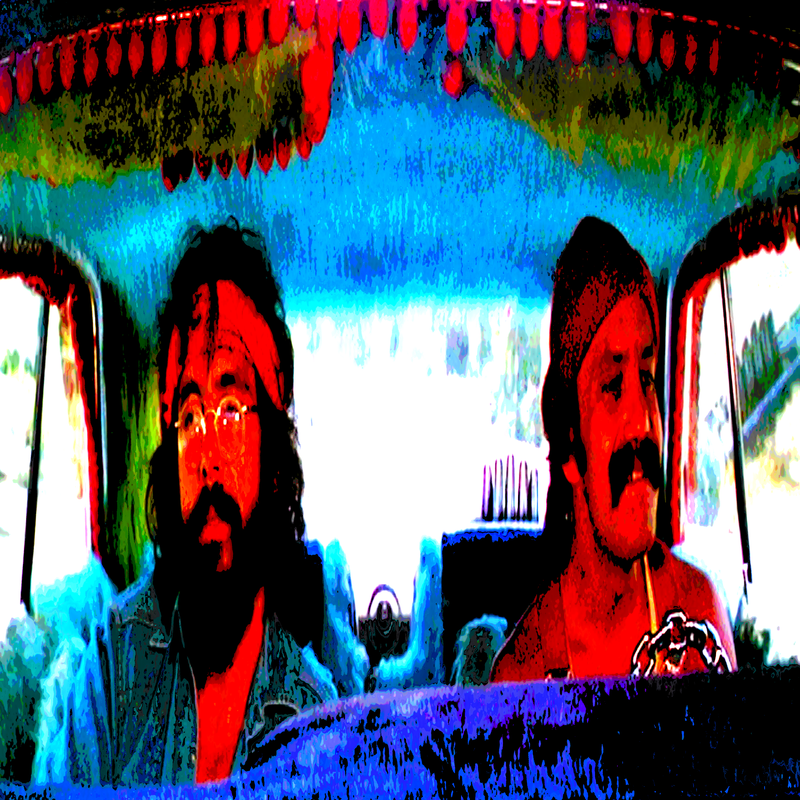|
photo & text by nacrowe
there was a brief few-month period in-between teaching gigs more than a decade ago when i was temping as a paralegal for a law firm two blocks north of the NEW YORK STOCK EXCHANGE. i remember at the time there was a BORDERS bookstore (remember those?) around the corner that i would take my lunch break at, usually reading and drinking coffee. because this was the WALL STREET location, there were usually book signings fairly regularly and one day i remember the line stretching around two corners. which was absurd. the line was filled with men and women, young and old. it was for TERA PATRICK, the porn star. i just remember being amazed by it all. how mainstream and just out in the daylight that whole industry was becoming.
probably the woman to thank/blame for that mainstreaming of adult films is JENNA MASSOLI, a.k.a. JENNA JAMESON who in her autobiography HOW TO MAKE LOVE LIKE A PORN STAR: A CAUTIONARY TALE (HARPERCOLLINS, 2004), co-written with NEIL STRAUSS (co-author of other books by MÖTLEY CRÜE, DAVE NAVARRO, MARILYN MANSON, etc.) recalls her life trajectory from a LAS VEGAS misfit to taboo mainstream SEX SYMBOL. JAMESON really goes out of her way to educate the reader about the ins and outs of the industry, often dispelling misinformation regarding safety and abuse while not shying away from the permanent consequences of being filmed having sex for money. she must know that her book, much like her career, is providing access to a taboo subject and mainstreaming information. i really give her credit for not glamorizing the industry but rather being clear-headed and transparent about its perks and pitfalls. all that being said, this idea of self-exploiting one's SEXUALITY for financial gain is hard to stomach and you get the feeling that the subplot of this book, her drive to find connection (both EMOTIONAL and PHYSICAL), made her vulnerable for this career path. having no nurturing, maternal force growing up (her mother passing away when she was an infant) and a father that was largely distant and unavailable found her searching for a community that saw her making poor choices (by her own judgement) again and again as her family continually moved during her formative years. having dealt with other traumas (both of CHEMICAL and SEXUAL in nature) you really get the sense that JAMESON is at her core a survivor who does't look back to make and most definitely does not make excuse for her actions. she makes us aware of her past as a means of transparency, but you definitely get the sense that she doesn't want to be defined by such. she owns her choices. i was taken aback by how familiar this narrative is to other books i've read over the years related to musicians and actors. this need to connect and affect others. it just so happens that her vehicle was PORNOGRAPHY and that she was the avatar that brought such to bear during the beginnings of the digital age, which we are currently in and dealing with the consequences of. i can't imagine the hardships she went through, just on a societal level where women's SEXUALITY is something to be tamed and compartmentalized. given that she started her own production company, hers is a story about power and her ability to grab it in the most male-dominated of industries. i'm not passing judgement on her choices or the industry itself. i just think its a fascinating subject and i'm glad she decided to speak her truth. definitely a book worth reading if you are interested in sexual politics and representation(s) of femininity in the media. side bar: this book was published in 2004 in the ensuing decade-and-a-half JAMESON has transformed into a twice divorced mother of three who has adopted staunchly ultra far-right conservative views. she is a stridently vocal supporter of former POTUS DONALD TRUMP and his regressive agenda regarding immigration, guns, abortion, etc. in my opinion, THAT TRANSFORMATION is far more interesting than anything found in her autobiography, arguably released at the height of her fame. what would make someone who arguably broadened the parameters of free speech and mainstream discussions surrounding sex, and even profited off it handsomely, choose to dive deep into reactionary rightwing politics. seems to be a trend of that with the similar likes TILA TEQUILA (alt-right nazism) & JENNY MCCARTHY (vaccine denial) utilizing their public personas to misguide the public. again, i am not passing judgement here, but THAT is the book i'd like to read from JAMESON.
0 Comments
photo manipulation by nacrowe
throughout all the past memoirs i've read regarding musicians since starting this blog, there always seems to be this crossing of the rubicon moment when fame hits. its a transitional moment where a new kind of pressure is introduced and musicians have to deal with their altered public profile in terms of their FAMILY, PEERS and ADMIRERS. DIG! (INTERLOPER, 2005) is a documentary that is very much about that period of transition and the potential brutal aftermath of having SUCCESS.
the film follows two tight-knit bands THE DANDY WARHOLS and THE BRIAN JONESTOWN MASSACRE as they navigate the 90s underground INDIE ROCK scene together. THE DANDY WARHOLS are very much in the vein of SHOEGAZE and ALTERNATIVE ROCK with a decidedly heroin-chic look and bohemian flair that belies their names obvious reference. they very much come off as a knowing nod of the hat to all the better eras of rock history, recalling THE VELVET UNDERGROUND, THE ROLLING STONES and even concurrent INDIE ROCK bands such as THE BREEDERS. THE BRIAN JONESTOWN MASSACRE is basically the vehicle for songwriter / multi-instrumentalist ANTON NEWCOMBE, who takes the hero worship one extra level and singlehandedly recreates the feel of 1960s PSYCHEDELIA but puts his own authentic twist on it. he is the resident genius of the two bands, both fully acknowledging such. what marks this film is the dissolution of this once intimate, supporting relationship between the two bands. this is the result of both NEWCOMBE's DRUG ABUSE, ABUSIVE BEHAVIOR and ultimately, his unreliability. THE DANDY WARHOLS on the other hand are probably more careerist and have a more streamlined sound which ultimately gets them courted by major labels and ends with them signing to CAPITOL RECORDS. for NEWCOMBE and THE BRIAN JONESTOWN MASSACRE this is a betrayal of their INDIE ROCK ideals and DIY sensibilities. both bands take shots at each other in their music and things just devolve. much like the documentary film HYPE! (HELVEY-PRAY, 1996) was about the SEATTLE ALTERNATIVE ROCK scene of the late 1980s and early 1990s dealing with COMMERCIAL VIABILITY and the consequences of that on the purity of their scene, this film deals with the same situation except in a more direct, face-to-face dynamic. ultimately its a strange thing to question AUTHENTICITY in music. GENE SIMMONS once said that "everyone is in the KISS business" and he was right. everyone is monetizing off their image ultimately. everyone is being marketed. i suppose it is the level of control that you give up on the way to gaining major distribution from a record label. to them you are an investment and in order to have it pay off they present their roster in a certain manner. but i dont know, even back then i felt the PUNK ROCK police attitude towards music was pretty simplistic and ultimately counterproductive. now the whole argument seems naive and a waste of time since in the age of MOBILE DIGITAL TECHNOLOGY with video and streaming platforms at everyone's disposal on their phone(!) the compromise necessary for DISTRIBUTION doesn't exist. now record labels are just brand names that raise your public profile in a flooded market. watching this documentary now is almost an act of NOSTALGIA for a less complicated time when lines that divided music where more well-defined. its the wild west now and basically everyone would make THE DANDY WARHOLS decision if asked. NEWCOMBE is an anachronism. great classic documentary dealing with PUNK ROCK guilt. required viewing. photo manipulation by nacrowe
dedicated to his close friend since childhood, kindred spirit and deceased former bandmate D. BOON, WE JAM ECONO: THE STORY OF THE MINUTEMEN (ROCKET FUEL FILMS, 2005) is an intimate documentary largely narrated by MIKE WATT about his former band, the highly idiosyncratic and influential 1980s HARDCORE band THE MINUTEMEN.
hailing from SAN PEDRO just as the SOUTH BAY was taking over the LOS ANGELES music scene with a more volatile and aggressive wave of PUNK ROCK that included the likes of BLACK FLAG, CIRCLE JERKS and THE DESCENDENTS, THE MINUTEMEN represented the conceptual and artistic vanguard of the scene. their lyrics were opaque and their sound kinetic yet off-kilter, skittish and dare i say it, funky. in a scene where subtlety was not the norm, both sonically and in terms of lyrical content, THE MINUTEMEN effectively expanded the out realms of the genre in the same way HUSKER DU had done in their respective scene at the time. the core of the band existed before HARDCORE emerged, but in that scene they saw a freedom and artistic opportunity. D. BOON was an accomplished visual artist and had a way with lyrics where he could evoke images with a minimum amount of words. this efficiency likewise found its way to his guitar playing, which borrowed from various genres and transcended the extreme buzzsaw tempos of his label-mate and fellow scene participants, BLACK FLAG. in essence they had a chemistry that came from years of camaraderie and basically exemplified the DIY ethos of PUNK ROCK. they were completely self-made and unique. can't say the same for the construction of the documentary itself. it drags a bit and has a very uneven pacing throughout. it could use another edit, which is unfortunate as the band definitely deserves better. but where it lacks in professional sheen it makes up for in content. its rough appearance may even make the film a better conduit for information as it provides a sense of intimacy, especially with regards to its interview footage. this film includes archival live performances and then-recent interviews with the likes of peers such as IAN MCKAYE (MINOR THREAT), JELLO BIAFRA (DEAD KENNEDYS), MILO AUKERMAN (THE DESCENDENTS), KEITH MORRIS (BLACK FLAG / CIRCLE JERKS), J MASCIS (DINOSAUR JR), MIKE MILLS (R.E.M.), DEZ CADENA, CHUCK DUKOWSKI & HENRY ROLLINS (BLACK FLAG), KURT KIRKWOOD (MEAT PUPPETS), JOHN DOE (X), FLEA (RED HOT CHILI PEPPERS / FEAR), THURSTON MOORE & LEE RANALDO (SONIC YOUTH), ROBERT HOLZMAN (SACCHARINE TRUST), RICHARD HELL (TELEVISION / THE VOIDOIDS) and COLIN NEWMAN (WIRE) among many others. worth checking out only if you are a deep fan of the genre or the artist, but may be less interesting for those not familiar or eager to explore either. there are other documentaries that are arguably a better introduction to the scene in general like AMERICAN HARDCORE (AHC PRODUCTIONS, 2006) or PUNK: ATTITUDE (3DD PRODUCTIONS, 2005). photo manipulation by nacrowe
the no frills documentary MY CAREER AS A JERK (WE GOT POWER FILMS, 2012) is very much a basic run through of the career of HARDCORE legends THE CIRCLE JERKS with a focus on their wild, kinetic frontman KEITH MORRIS. included are grainy live performance footage from nearly every incarnation of the band as well as interviews with MORRIS and past CIRCLE JERKS bandmates GREG HETSON, LUCKY LEHRER, EARL LIBERTY and ZANDER SCHLOSS as well as contemporaries of the 80s HARDCORE scene like HENRY ROLLINS (BLACK FLAG), J MASCIS (DEEP WOUND, DINOSAUR JR), BRIAN BAKER (MINOR THREAT, DAG NASTY) and GREG GRAFFIN (BAD RELIGION).
i dont want to say that this film was a cash grab, but in terms of its editing and overall narrative cohesion it is a bit uneven. at no point did i get a sense of what made them special relative to their peers or their contributions to the 80s HARDCORE scene other than that they existed. instead we are given a behind the scenes at tensions within the band and the immense risk involved in maintaining a HARDCORE band longterm. that was my big takeaway at least. in a fluid musical scene in which its members prided themselves on being spontaneous and in the moment, any type of longevity in such a combustible environment with their credibility still intact is an accomplishment in and of itself. maybe the point of this film was to answer fans why a CIRCLE JERKS reunion in the 2010s was not in the cards as MORRIS was very much pursuing his work in OFF!, which very much stands up to his catalogue with gusto. if you are completist than this film is worth your time, otherwise i would implore you to consider reading MORRIS' stellar MY DAMAGE: THE STORY OF A PUNK ROCK SURVIVOR (DA CAPO, 2016) memoir instead (review linked HERE). photo manipulation by nacrowe
TRICKY DICK AND THE MAN IN BLACK (ALL RISE FILMS, 2018) follows the path of COUNTRY MUSIC icon JOHNNY CASH and "pun intended" the line he walked between the political fracas that defined the VIETNAM WAR era.
i think CASH's place in the pantheon of AMERICAN CULTURE is fully secure in part due to his sharing of the spotlight in the late 1960s on his namesake television show where he introduced MIDDLE AMERICA to songwriters and voices they may not have been familiar with or had negative opinions about: artists like JONI MITCHELL, BOB DYLAN, NEIL YOUNG, RAY CHARLES, LINDA RONSTADT and PETE SEEGER. the generosity that showed endeared him to the growing counterculture and FOLK movements that were then emerging, but make no mistake, the man himself was the very embodiment of the heartland and all that entails. the main narrative of this documentary follows RICHARD NIXON's troubled presidency as he continues the unpopular war he inherited and expands it into CAMBODIA as a way of taking the fight to the NORTH VIETNAMESE ARMY and the VIETCONG. famously, NIXON rose to power through the notorious SOUTHERN STRATEGY that saw him adopt the politics of grievance and adeptly exploited racial divisions. this strategy is still very much a part of REPUBLICAN sloganeering to this day. what NIXON saw with his rise was a cultural chasm between the unbridled optimism of the newly politically and economically empowered youth culture of the BABY BOOMERS (now a voting bloc) who listened to BRITISH INVASION rock bands from the UNITED KINGDOM as well as homegrown acolytes alike. he saw this as a threat. famously he harassed JOHN LENNON through deportation threats and others he saw as agitators that could potential galvanize the youth against him. enter CASH whom he invited to the WHITE HOUSE to play a concert in support. CASH at this point was in the uncomfortable position of not wanting to appear to support NIXON explicitly while also feeling a patriotic obligation to appear when you are called by your country, in this case the commander-in-chief himself. the climax of this respectful interaction as his playing of his song "WHAT IS TRUTH" which addressed in its lyrics war, drug addiction, intergenerational differences and the use of politics as a tool for the institutional mistreatment of minorities. all this with NIXON in attendance. a few weeks later WATERGATE happened and NIXON was later removed from office, but that moment became a a part of the CASH legacy and gained him credence with AMERICANS of every stripe. watching this film, you can see the beginnings of bifurcated cultural divide that separates RED from BLUE, RURAL from SUBURBAN. for a moment CASH was able to walk that line with grace. something we are missing at this political moment indeed. empathy. photo manipulation by nacrowe
HANK: FIVE YEARS FROM THE BRINK (RADICAL MEDIA, 2013) is a JOE BERLINGER (SOME KIND OF MONSTER, PARADISE LOST TRILOGY) directed documentary that allows former TREASURY SECRETARY HANK PAULSON, third under the GEORGE W. BUSH administration, to explain his response and process with regards to the 2008 financial crisis that defined his stewardship of the UNITED STATES' economy.
the format of this documentary is very much interview-based in the tradition of ERROL MORRIS, who famously is an off-camera interlocutor asking questions of his subject and challenging them. all we get is the subject's, here being PAULSON, reactions which serves as a light interrogation. this is intercut with archival footage. i appreciate this format because it very much leaves the focus of the narrative on that of the subject, not distracting side recreated events or first-person narrations. it forces the viewer to listen. anyway, PAULSON very much says what you would expect: that the focus of TARP and propping up the banks and FANNIE MAE/FREDDIE MAC in the wake of the crisis was aimed at helping common people. he was direly afraid of a second depression, with bread lines and high unemployment. his wife gives testimony throughout about the physical tole these decisions had on him physically and mentally. i do not doubt it. i remember back then people called him "KING HANK" because he was given the power by congress to financially buttress the market however he saw fit, resulting ultimately in TARP. he mentions the fact that all the money was made back and answered, ineffectively, longstanding critiques that the bailouts never matriculated down to the street level and that the banks merely profited off the kindness of the government's bailout. AMERICAN people always talk about "no risk-it, no biscuit" but what happens when you fail? average people loose homes. the wall street bankers got bonuses. two points i found interesting.
fingers crossed. photo manipulations by nacrowe
edited and directed by famed director CAMERON CROWE from a career's worth of footage culled from the archives of countless videographers and filmmakers, PJ20 (VINYL FIILMS, 2011) is the story of PEARL JAM a in essence a celebration of their then 20-year career.
in essence the story of PEARL JAM is the story of the independent music scene in SEATTLE, which grew from a small, intimate community of like-minded supportive musicians to absolute world dominance and probably the last major ROCK AND ROLL scene ever as well as the last cultural movement of the pre-internet age. commentary from the likes of CHRIS CORNELL really brings into perspective the uncompetitive nature of the scene, as he gained much from sharing a place with ANDY WOOD, lead singer of MOTHER LOVE BONE. his death from a heroin overdose was a turning point in the scene as he was a vibrant source of energy and projected his enthusiasm for music and art on all those that came in his path. years later speaking about his passing still evokes sorrow and empathy from his former bandmates and friends. it was his passing and the sudden demise of MOTHER LOVE BONE that marked the beginning of PEARL JAM as its members STONE GOSSARD and JEFF AMENT, also formerly of GREEN RIVER, created a demo that ultimately landed in the hands of EDDIE VEDDER. much of this film gets into the challenge of maintaining an identity when the world around you changes their perception of you, as happened with VEDDER when PEARL JAM, along with other members of the SEATTLE scene (NIRVANA, SOUNDGARDEN, ALICE IN CHAINS, etc) became famous. dealing with stalkers as well as "punk rock guilt" for having success definitely affected the band up until they toured with NEIL YOUNG around the time of VITALOGY (EPIC, 1994). in what i consider the most poignant part of the film, there is a taped message from YOUNG stating that when he read KURT COBAIN in a magazine state that he was having difficulty maintaining his authenticity and "keeping it real" in this circus-like environment, he wanted to tell COBAIN that he owed nothing to anybody and should cancel shows. after touring with YOUNG, PEARL JAM were affected by his mentorship and especially his opinions on fame. essentially YOUNG stays true to his muse and enjoys the ride, which sometimes finds him playing arenas and sometimes mid-sized or small theaters. but his integrity is intact.
there is also mention of the influence of COBAIN on PEARL JAM, which was essentially consider your choices (political, business, artistic) and own them. they took such in earnest moving forward after his passing and you can definitely see this influence in their stance against TICKETMASTER as well as VEDDER stating during the telecast that the GRAMMY his band just won had no meaning. they definitely kept it real. it also helped them in the wake of the ROSKILDE disaster, when they learned to say no. i can't imagine how heartbreaking that tragedy was for them, just horrific to think about. like any retelling of an event or scene pre-internet and pre-SOCIAL MEDIA, many of these concepts related to "punk rock guilt" seem both antiquated and highly relevant in our digital age. antiquated because there is no more record industry, no more corporate ogre to sell out to anymore. yet absolutely relevant because the eye of digital media never sleeps and has probably only become more intense to musicians and pop stars in the age of TMZ and the modern security state. i would not wish to be famous these days, as the invasion of privacy quotient has gone up exponentially. fans are ever more obsessed and everyone is a self-appointed expert and has a blog(!) spouting their opinion into the ether. PJ20 came out in 2011 but was filmed up until the touring behind the 2009 release of the BACKSPACER (MONKEYWRENCH, 2009) LP, which included jabs in concert at the outgoing BUSH ADMINISTRATION. i can't wait to see if they make PJ30 and what that portends about our current fall from grace. if anything, the past 10 years of AMERICAN history has dwarfed the corruption and lawlessness of the previous 200. interested in seeing how their past informs their longstanding advocacy of ENVIRONMENTAL concerns and REPRODUCTIVE rights, especially now in our collective doomed era of TRUMP. can't wait for that sequel. photo manipulations by nacrowe
in the obtuse documentary BURROUGHS: THE MOVIE (CITIFILMWORKS, 1983) by director HOWARD BROOKNER we are provided a rare glimpse into the mind and writings of the influential BEAT writer WILLIAM S. BURROUGHS through not only his narration, but interview footage with peers and acolytes such as ALLEN GINSBERG, TERRY SOUTHERN, LUCIEN CARR, HERBERT HUNCKE, BRION GYSIN, PATTI SMITH, FRANCIS BACON and JON GIORNO as well as his only son WILLIAM BURROUGHS JR (who passed on during the time of filming).
we follow BURROUGHS as he guides us through his past including his time spent as a child in ST. LOUIS as well as his time at HARVARD, medical school in VIENNA, his failed attempt to enlist with the OSS (now the CIA) during WWII and subsequent fall into HEROIN addiction in NYC which was around the time he made the acquaintance of JACK KEROUAC and ALLEN GINSBERG. this continues through his marriage to JOAN VOLLMER and brith of his son through her accidental shooting in MEXICO and his son's eventual death in his 30s due to the chronic effects of alcoholism. littered throughout this personal narrative we find BURROUGHS reading excerpts from JUNKIE, NOVA EXPRESS, NAKED LUNCH, THE WILD BOYS and EXTERMINATOR! among other publications. we learn that NAKED LUNCH was written during his time in TANGIERS in the early 1950s when he was able to make use of the lax customs of local pharmacies to indulge in narcotics. as a documentary this film was exceedingly dry. this is partly due to BURROUGHS prodding vocal affectations that seem to drone on ad infinitum. its funny, if i wasnt a fan of his work than i would find this film impossible to stomach, but he is a figure that pretty much brought POSTMODERNISM to literature in the 20th century and is a preeminent literary figure among his peers. his work is almost like a collage in art terms or montage in film terms as his cutouts served to provide jagged juxtapositions of concepts, words and phrases that seemingly spawned new visualizations and ideas out of multiple perspectives connected over space and time.
to verbalize his influence on modern culture, which has only bent more towards his worldview in the digital age of fractured realities where truth isnt relative, its irrelevant. seemingly we are in a post-truth and post-morality world where everyone is a JUNKIE for information. brutal low-grade gossip or refined, well-articulated and researched essays all fill the same fix and are mainlined and discarded the same, onwards looking for the next hit. so this all makes me think that to experience this film expecting a straightforward presentation of a coherent narrative is wholly missing the point. if anything this film is a snapshot that is out of focus and out of context. a brief window into his late life mindset after a long fruitful yet painful career. it is up to his to draw our own conclusions on the worth of his perspective and words. on us to provide the context for this disjointed documentary of a man whose trade was navigating moral and temporal ambiguity. photo manipulation by nacrowe
seductively filmed by noted fashion photographer BRUCE WEBER in stark black and white, LET'S GET LOST (ZEITGEIST FILMS, 1988) lulls the viewer into an ephemeral world of romance and sophistication much like the music of its subject, WEST COAST JAZZ musician CHET BAKER. both the cinematography and the music make it easy to interpret the magnetic power of such musician, who seemed tailored-made for his era, having JAMES DEAN looks and a smooth, effortless prowess on his instrument that has made him an icon of 1950s AMERICA ever since.
but it is a lie. BAKER is a conman. the beauty of this film is that much like his three wives and countless girlfriends before, we the audience are being wooed. you would think the man would have regrets about wandering astray from his responsibilities as a father, husband and son, but he seems entirely focused on his pursuits, even in his 60s when this film was made. what is presented is a man for whom everything came easy. a natural musician with a smooth croon of a voice, he didnt labor hard at his craft or all that came with it. women gravitated to BAKER, but he was only faithful to his own whims which eventually included narcotics. we are presented with an unreliable narrator and those that he took advantage of. most tragic is the admission by his own mother that he was a bad son and that he disappointed her. in interviews his own children speak of him with a sense of frustrated mockery, which you assume has been years in the making. its almost DORIAN GRAY-like how this talented, handsome man with the smooth, intoxicating touch on the trumpet left such a wake of carnage in his personal life. this documentary is his final attempt at convincing us otherwise. it seems the highly stylized cinematography succeeds in demonstrating this gulf between the facade and the reality which is uncomfortable and seemingly tragic. its a life wasted. LET'S GET LOST is a unique, smart documentary on a flawed icon. definitely recommend seeking out and watching this challenging gem of a documentary if you can locate a copy. note: FLEA has a forgettable role asking questions about MILES DAVIS to BAKER when he is holding court with random photogenic young people. didn't get why that made the cut, but there you have it. maybe its because FLEA plays trumpet. photo manipulation by nacrowe
having given up touring in 1966, BOB DYLAN was convinced to return to the road in the mid 70s during the bicentennial with his ROLLING THUNDER REVUE tour, in part to take advantage of the newly lucrative national stateside touring circuit. but things were different this time around as he experimented with minor theatrical elements and the concept of artifice as means of allowing him the psychic space to perform and communicate, ironically, more directly with more honesty. as DYLAN states in this recent the MARTIN SCORSESE-directed documentary ROLLING THUNDER REVUE (NETFLIX, 2019), "when somebody's wearing a mask, he's gonna yell you tell you the truth--when he's not wearing a mask, it's highly unlikely." interesting concept.
made up of archival footage from the period as well as recent and vintage interviews, the film finds DYLAN trekking across a continent anew that was in the midst of experiencing the death throes of the VIETNAM WAR, bitter intergenerational discord as well as political uncertainty with the fall of PRESIDENT RICHARD NIXON. it was quite a time in AMERICAN HISTORY and for DYLAN, long-heralded with an unwanted VOICE OF A GENERATION tag by his proponents, he chose explicitly to present himself within the context of a band concept on stage solely armed with new songs that made use of such. if you look closely youll notice such members of the band including T-BONE BURNETT and even guitarist MICK RONSON, straight from his time with DAVID BOWIE after the SPIDERS FROM MARS had broken up. pretty cool stuff. now im not a big DYLAN fan, most of the his work i am familiar with is firmly in the FOLK tradition and comes off as musically repetitive and unimaginative. lyrically hes a genius but as a musician i thought he sucked. sue me. the music here is definitely more BLUES-based and at times comes off quite powerfully with a loose ROCK AND ROLL feel. dare i say with songs like "HARD RAIN" he actually grooves. who knew? and "HURRICANE" is arguably the highlight of the film as it touches on DYLAN's sense of social justice and the redemptive and transformative power of music. maybe its time for me to dive into his catalogue again. on a slight side note for cinema dorks, SCORSESE deftly intercuts shots of the mime BAPTISTE from the FRENCH WWII classic THE CHILDREN OF PARADISE, which is the ultimate switch-and-bait film of all time. the movie begins with the curtain opening after the credits, cluing you right from the jump that this is not what it seems. the film is highly allegorical with everyone wearing masks, some literal and others covered by aristocratic behaviors deemed acceptable by the rigid FRENCH class system despite diabolical motives. even the film itself, which was made under NAZI occupation, is viewed by many as a coded rebuke against their new superiors. so anyway, if ever there was a film to reference about speaking truth while being physically obscured, THE CHILDREN OF PARADISE is it. sorry, i'm a film dork. the film itself utilizes performance footage, both rehearsal and in concert, meant to be included in a panned obscure film from the period by a failed scandinavian arthouse director. while some of the behind-the-scenes footage seems listless and meandering on first glance, it also gives you an intimate look at the hangers-on of DYLAN and their goal of being in his good graces. as exhausting as it is to hear these people dribble and drabble on, pontificating about bullshit, you can only imagine how much worse that would be if this was your party and you were the object of their affection. i get it now why he's a recluse. which brings me a bit to the structure of this film. at the beginning the interview with modern-day DYLAN breaks down on the first question and essentially he just says he's gonna talk about what he wants to. there is no purpose to the film or bigger revelation about life in general in this film, instead DYLAN argues it is all about creation and making things. when the original scandinavian director asks dumb straightforward questions to DYLAN before and after going on stage, again we are left to empathize with him not wanting to butcher the experience on stage into words. language devalues lived experience and as a community we are experiencing this journey once again. again as he states in the film "thought will fuck you up." i should also mention that on this journey as tour mates and collaborators were such luminaries as JOAN BAEZ, ALLEN GINSBERG, JONI MITCHELL, ANNE WALDMAN, PETER ORLOVSKY, SAM SHEPARD and ROGER MCQUIN. interesting film worth checking out and revisiting. photo & text by nacrowe
nostalgia is a weird thing.
i get it. its comforting for people to have an unrealistic memory regarding the past. they delude themselves into believing that the past was this halcyon period where people were more authentic and pure, probably due to a lack in modern technology. its a misguided revisionist delusion of hipster proportions and, of course, it is bullshit. in his expose on the scandals of the stars of early cinema at the beginning of the 20TH CENTURY in HOLLYWOOD BABYLON (PAUVERT, 1959), cult filmmaker KENNETH ANGER essentially eviscerates any quixotic notion regarding the purity of that period. it salaciously examines the supposed exploits of major players from that era including CHARLIE CHAPLIN, FATTY ARBUCKLE, CLARA BOW, MARION DAVIES, BUSTER KEATON, JEAN HARLOW, MAE WEST, ERROL FLYNN, LUPE VELEZ, LANA TURNER and the supposed various misdeeds carried out by them or their affiliates, including rape, murder, drug abuse, "communist" infiltration, violence, theft, etc. rereading this book, which was originally published in 1959 but then subsequently banned for over 10 years (my copy is the 1976 first edition DELTA repressing), reminds me of TMZ. although that may be a slight insult to TMZ since on balance they usually report facts accurately. their interpretation of such may be suspect. i dont know if HOLLYWOOD BABYLON is accurate and i have my doubts, but at the very least it is a gossipy window into a touchstone of AMERICAN culture, the entertainment industry, which tends to operate on different rules of morality than mainstream society. i guess power and influence does that to you, even way back then at its infancy during the pre-PRODUCTION CODE era. as a cinephile, ive always found it interesting when we collectively give celebrities a pass for grave misdeeds, whether that be MEL GIBSON (anti-semite), JERRY SEINFELD (dated a teenager when he was 39), STEVE JOBS (denied paternity of his daughter), PEYTON MANNING (tea-bagged his female personal trainer), JOHN LENNON (abandoned his child) or even ALBERT EINSTEIN (racist against asians). perhaps projecting our dreams and emotions on humans is futile act since inevitably they will let us down and mirror our own fall from perfection. they are human after all. and maybe that was ANGER's aim with his notorious book of gossip from a previous generation, to showcase their humanity. and to kill nostalgia. photo manipulation by nacrowe
THE SMART STUDIOS STORY (CONEY ISLAND STUDIOS, 2016) is documentary about the outwardly unassuming yet highly influential recording studio in MADISON, WISCONSIN, that was founded and run by STEVE MARKER and BUTCH VIG. the creation of the studio was at an interesting inflection point in american culture as there was a definite influx of underground HARDCORE and INDIE ROCK bands that were supported in earnest by college radio and a nationwide network of bars, VFW halls and small clubs not to mention independent promoters and independent record labels and record stores. what connected all these stakeholders in the scene was a sense of self-reliance and DIY ETHIC. maybe its simplistic to say that the puritan ethic of the midwest played a role in this community, but essentially this mindset led to an era of experimentation in music that was free of financial considerations, because none of this was supposed to go commercial. given that VIG was a musician (drummer in local bad SPOONER with future GARBAGE collaborator DOUG ERIKSON) he also had the added benefit of being able to listen and suss out the needs of a band, how to bring out their sound in a fun, experimental atmosphere. he was also able to know firsthand what worked and didn't work from a musician's perspective in "professional" studios. i think his versatility is underrated and part of his work ethic and gets lost in the shuffle when success for his production duties gained global notoriety.
enter NIRVANA and THE SMASHING PUMPKINS, the two bands whose albums NEVERMIND (DGC, 1991) and SIAMESE DREAM (VIRGIN, 1993) altered the landscape for VIG and the underground scene seemingly overnight with the inception of a financially viable ALTERNATIVE ROCK scene that was supported by commercial radio, promoters and the commercial infrastructure of corporate AMERICA. this allowed VIG freedom in choosing projects since SMART STUDIOS was now a destination studio and his services a known commodity. i think given that sea change it is to his credit that VIG along with MARKER and ERIKSON expanded their craft by utilizing technology and incorporating new techniques in their band GARBAGE. for me their incorporation of HIP HOP and ELECTRONICA elements into a new hybrid style are one of the defining sounds of the 1990s. the fusion of such is only that much more impressive given the cultural impact of his celebrated yet sonically more straightforward catalogue of ALTERNATIVE ROCK production work. its ironic that this embrace of technology is also what brought down the studio, as digital recording software on personal computers made this DIY ETHIC spread to a new prosumer base of musicians. the time had come to move on. my takeaway from this documentary is that good music can come from anywhere, no matter how far off the beaten path. SEATTLE, MINNEAPOLIS, PORTLAND. in this case WISCONSIN. innovation is a personal pursuit and must be met on its own merits. in many ways BUTCH VIG's career as an established producer was entirely a fluke of circumstance. on the other hand he was talented and was prepared to take advantage of opportunities when presented. makes me wonder what other crevices of the UNITED STATES or even the golbal scene have i not considered researching. where should i look next? because i'm always searching. photo manipulation by nacrowe
KILL YOUR IDOLS (HUNGER ARTIST, 2004) examines the NO WAVE scene in the late 1970s in the lower east side and is largely a return to the more sonically experimental and lyrically ambitious origins of the PUNK movement (think PATTI SMITH and RICHARD HELL-era TELEVISION). almost ironically given that last statement is the fact that what largely unifies all these bands was their capacity to scrape away and put aside all their influences and create something wholly original. no recycled BLUES riffs, no clever allusions. this was direct, visceral, confrontational music that was meant to alienate the listener and make them uncomfortable.
essentially NO WAVE served as a new cultural year zero. the music is described by some of the participants as being a byproduct of a deep need to emotional purge themselves. it transmitted a basic consciousness through music that embraced the moment and extreme dissonance of what is essentially ANTI-MUSIC. this documentary interviews both those initially associated with the scene such as as SUICIDE, THEORETICAL GIRLS, TEENAGE JESUS & THE JERKS, THE CONTORTIONS and DNA and those who formed bands in its wake like SWANS and FOETUS as well as musicians that were informed by the scene down the line when this documentary was being recorded in the early 2000s; bands like A.R.E. WEAPONS, GOGOL BORDELLO and the YEAH YEAH YEAHS. whats interesting about this documentary is not the actual music itself, which i find unlistenable by design; it is literally music not meant to be listened to. what interests me is how this brief moment in time freed future musicians to attempt unconventional techniques that embrace dissonance and disharmony into a sound that is wholly listenable and enjoyable to an audience. much like the beats with the cut-out method added the chaos of random chance into their writings to create meaning, this new generation was using the most confrontational of scenes to model their ideas of what was possible in creating harmonious music by nontraditional means. anti-music beget music. they created "new traditions" in DEVO terms. its an interesting idea. you can see the legacy of this era not just in looped, feed-backed curations of INDIE ROCK bands like SONIC YOUTH and THE BOREDOMS, but also proto-INDUSTRIAL groups like EINSTURZENDE NEUBAUTEN. like all experimental music or scenes based on such they are short-lived by necessity. experimentation calcifies into patterns which turns into modes of expression and techniques that further get introduced as new orthodoxies. thats why bands that truly take on the mantle of the spirit of this scene sound nothing like it. kill these idols as well no doubt. photo manipulation by nacrowe
documentaries are meant to answer questions that they pose. but what if there is no answer?
that is the basic conceit of HOW TO DRAW A BUNNY (ELEVATOR PICTURES, 2002), a documentary about the mercurial and enigmatic artist RAY JOHNSON. he was someone that lived through his art and had little need for traditional human interaction, choosing to keep his contemporaries at a distance and not partaking in gallery exhibitions and the like. he instead presented himself doggedly to the world through his coded, impenetrable drawings and collage work that he'd mail out. in many ways his use of the mail was his mode of interaction, which for the 1950s is exceedingly modern to our eyes in the digital age of anonymous monikers using comments sections with the gusto of a late night bathroom graffiti artist. its interesting to watch a documentary where those that speak of him, speak of their inability to get a sense of the man. a total enigma that confused and yet gained the respect of major players in the art world including contemporaries like CHUCK CLOSE, ANDY WARHOL, CHRISTO & JEAN-CLAUDE and ROY LICHTENSTEIN among others. i can't say i learned anything about the guy. but maybe that was the point. even his mysterious suicide seemed in comparison to his life less baffling. at least with that act there was some finally conclusion being made. or was it? maybe it was just an exclamation point that invited investigators, the public and his peers to reconsider his life and by extension his work. seems his whole life was one long curated performance piece (including his death) and this documentary itself is both the entry point and the ultimate expression of his legacy as an groundbreaking artist. but really i dont know. i'm still processing this very intriguing film on a most curious individual. its like trying to decipher MARCEL DUCHAMP. answer: you can't. photo manipulation by nacrowe
HELLO CLEVELAND!
arguably the greatest parody film of all-time and the most painful for touring musicians to watch. i can't even count the amount of musicians in interviews i've read who namecheck this film as the most painful thing they've ever seen. SLASH himself said that THIS IS SPINAL TAP (MGM, 1984) ruined an entire GUNS N' ROSES tour for him since it hit the mark with such precision. where this film excels is in its mocking of the utter ridiculousness of nearly all forward-facing aspects of ROCK N ROLL, everything from album covers, lyrics, gear, stage set design to JESUS-complex surrounding musicians that drank the kool-aid on their image. in my estimation all the classic lines of this film have that core ribbing as its moral center. i remember once GENE SIMMONS saying that all bands (at the time he was referencing the then-current GRUNGE bands out of SEATTLE) were in the KISS business. they all sold records and merchandise. such is true. no matter how "serious" or "artistic" your band is and no matter how respected they are by those whose opinion carries sway, at the end of the day you are a product that is being sold. THIS IS SPINAL TAP showcases a band that didn't get that memo and seemingly trample over every fault-line a band has to negotiate throughout their recording and touring cycles. having been around musicians in studios to some extent, the ridiculous nature of it all has never been lost on me. that is what makes it compelling and not part of the straight world. the music is also classic. its obvious they are mocking specifically post-OZZY BLACK SABBATH and DEEP PURPLE and late 70s/early 80s METAL in general with their silly set designs and focus on the macabre. but my favorite song in the movie is their send-up of BRITISH INVASION-era songwriting in "GIMME SOME MONEY." never fails to make me smile. classic movie with classic lines that still stings its subjects. quite an accomplishment. photo manipulation by nacrowe
film director DAVID LYNCH is renowned for his ability to control tone and atmosphere to such an esteem that his surname is now an adjective for such. he is a modern director of the first order but what some in the public fail to grasp is how is career, much like JULIAN SCHNABEL a generation later, is rooted in painting.
THE ART LIFE (DUCK DIVER FILMS, 2016) is a documentary that follows a dual narrative of both LYNCH's telling of his upbringing and connection to art while showcasing him creating a new work on canvas at his studio in the HOLLYWOOD HILLS. it is almost as though the experience of creation in painting is conflatable with that of exploring a unique psychological perspective of uncertain space and time as seen through a camera's eye. what i gained most about his upbringing was that in spite of its idyllic nature with two loving parents that treated each other well, there was always that unspecified fear of losing that love and affection. in fact, despite his father's fair judgement and loving temperament, any harsh words that resulted from disobedience came down arguably harsher in that environment. KEITH RICHARDS once wrote that his vision of hell was being invisible to those he loved. the threat of distance from his family is a common thread that influenced his character as well as his art. also reminds of the buddha's tenet that suffering is rooted in desire. they are intertwined, as even idyllic situations are rooted in suffering as we attempt to prolong and maintain them. the fear of loss of happiness is suffering in and of itself. that dualism resonates with me when considering his films as well as his paintings and visual film art. this theme of family is also carried out as we see LYNCH's young child painting side-by-side with him. unencumbered by expectations, the toddler is just enjoying his company and playing with colors on the canvas. you get the sense that this type of boundless joy and seeming amorality towards expectation is something LYNCH strives for. the goal is not a concept or a point, but rather the transmission of an experience, which also describes the experience of consuming one of his films, especially ERASERHEAD (AMERICAN FILM INSTITUTE, 1977). i have watched that film dozens of times yet i don't know what it is about, nor am i watching it to decode it. i watch it in order to enter that world. an alternate time and space. intriguing film. probably worth viewing if you can suspend expectations of what is usually presented in a traditional documentary. this film is an expressionist take on the individual and his paintings, not a treatise on his films. again, beyond intriguing and worth multiple viewings. BOOK REVIEW | "THE CHRIS FARLEY SHOW: A BIOGRAPHY IN THREE ACTS" BY TANNER COLBY AND TOM FARLEY, JR.6/8/2020 photo & text by nacrowe
i've already made explicit my love for comedian CHRIS FARLEY and his all-too brief career (check out that article HERE), but after reading this loose oral biography THE CHRIS FARLEY SHOW: A BIOGRAPHY IN THREE ACTS (VIKING, 2009), co-written by his older brother TOM FARLEY JR and compiling quotes from his friends, family, colleagues, childhood acquaintances and peers alike what becomes apparent was his complex humanity that far transcended his public persona.
what struck me about this book was not the stories of his kindness towards strangers or even the revelation that he was a vulnerable, deeply empathetic person that drew strength from his catholicism. no what struck me about this book was his relationship with his father. in my estimation this book is not about CHRIS FARLEY, it is about TOM FARLEY SR and CHRIS FARLEY. TOM SR was an academic standout who graduated from GEORGETOWN and was a rising talent with within the WISCONSIN GOP, even knowing then-SENATOR JOSEPH MCCARTHY. he was destined to become a lawyer but shortly after beginning law school had two heart attacks a promptly moved back to WISCONSIN and supported his family by running a company that paved roads for the local government. his job was basically to take people out to restaurants and schmooze them over lunch/dinner. he'd do this several times a day throughout WISCONSIN depending on the clientele. in essence, CHRIS (much like his brothers) adored his father and sought to please him throughout his career. CHRIS' only ambition was to be on SATURDAY NIGHT LIVE, the show whose member JOHN BELUSHI was a favorite of his father. throughout this narrative of his life, CHRIS made fateful decisions based on the flawed logic of his father. whether that be delusions about whether or not they both had a problem with food or alcohol (both were alcoholics that were morbidly overweight). even when he got to 600 pounds, his father held psychological sway over CHRIS, who wouldn't lose weight as a means of solidarity with his father. even creative choices that were detrimental to his career, and against the advice of peers, agents and his own better judgement, were made by the outsized influence of his father. for one, he did BEVERLEY HILLS NINJA (SONY PICTURES, 1997) not because of the quality of the script but because TOM SR had convinced him to take the money. to me this makes sense given that they had an IRISH-CATHOLIC clan mentality and again, for CHRIS his goal in life was to make his father laugh. its just tragic that he didn't get help because his generosity and sense of humor was inclusive and such a positive force in an unseen number of people's lives. there was a vulnerability to his work. a humility. this was a sad painful book to read if only because he was such a singular talent that was beloved by his peers at every step of his career and to this day he is still such a beacon of unbridled joy. the fact that he self-destructed so spectacularly and was such a lonely figure is heart-wrenching. selfishly, like so many others i would have loved to see the DAVID MAMET-directed "FATTY" ARBUCKLE biopic that was in development at the time of his death. what an apt project. anyway, this book was beyond compelling and well-worth seeking out if you are interested in SATURDAY NIGHT LIVE or the history of AMERICAN COMEDY. its a tragedy that is so GREEK Its uncanny. what a sad, sad story. photo manipulation by nacrowe
the documentary AMERICAN VALHALLA (EAGLE ROCK, 2017) takes its name from a song off of IGGY POP's late-career album POST POP DEPRESSION (LOMA VISTA, 2016), which was a collaboration between the iconic STOOGES frontman and musician JOSH HOMME of QUEENS OF THE STONE AGE/KYUSS fame. this documentary follows their collaboration throughout the songwriting and recording process with interviews of both conducted by ANTHONY BOURDAIN (RIP).
i guess it should be stated that while IGGY and HOMME come from celebrated bands, both are actually quite unconventional musicians. lots of bands pay lip service to expanding their sound on subsequent releases, but if you track the career trajectory of both you will see that is actually the case. when IGGY reached out to HOMME, both took it as an opportunity to experiment and see what new creations could be manifested from their respective provided elements. it was interesting that in navigating this new relationship they based much on instinct and cooked the songs quickly in short order to not overthink it. just move forward. i think this film at its core is about the nature of collaboration, especially when you have a history or legacy. it is about dismantling those expectations, both external and, more importantly, internal. i remember when i was teaching i never slept particularly well because i was constantly questioning my plans. its not that they were inferior, i knew they were sound, but the opportunity cost of it all drove me nuts. there were so many options and how could i choose the right course of action that would best serve my students. i think that drive in part is what broke my heart about the profession, the fact that so many of my peers phoned it in. taught the same thing in the same order as years before, altering nothing. i saw the classroom as a dynamic venue for exploring ideas and challenging them against new technologies and world events. opening up the curriculum to show how these classroom concepts affect our understanding of both the world and ourselves. the fact that i did this in foreign countries, never on my home court made it that much more invigorating and scary at the same time. more colors to play with. i was willing to fail and being unable to settle down completely at night was the price i was willing to pay. risk nothing you get nothing. what i am trying to say is that im well aware of this fear HOMME had in the film. how do i collaborate with an icon? make it worth his time and my time? and most frightening of all: the opportunity cost of all the other possible music i could write, that i could present to him. how do you conquer that fear? you just do it by doing it. being truly in the moment. their collaboration was all instinct, mutually respecting and sharing that creative moment. in the moment. right now. i loved that tightrope dance. i miss it. note: but i wouldnt return to teaching. dealing with administrations that didn't have the students interests at front of mind cut my heart out. repeatedly. a bad one-sided collaboration rooted in politics. great film. intriguing documentary on the nature of collaboration and cost required to make it a fruitful and meaningful endeavor. photo manipulation by nacrowe
i first became aware of THE ROCKY HORROR PICTURE SHOW (20TH CENTURY FOX, 1975) film sophomore year of prep school in MASSACHUSETTS. i remember trying to watch the movie when all of these kids in my dorm would keep talking over it and doing dance moves and acting out a whole independent narrative. i quickly realized what my peers were doing was insanely intricate and it dawned on me that this was the point of the film. later i realized that this was rooted 4th wall break was rooted in the original play, where audience participation was encouraged, but watching this all unfold did blow my mind at the time.
i can't think of another example of a film that thrives on this kind of behavior. closest i can think of is watching a film at theatre in NYC, where people will yell stuff like "BITCH DON'T OPEN THAT DOOR" at the perfect opportune time. yes, that does take you out of the scene, but in my opinion such enriches the movie going experience. its like getting free commentary from an unreliable narrator. i think part of the reason the interactive nature of the film works so well is that fact that it is a MUSICAL. an unconventional one at that which utilized ROCK MUSIC, something of a novelty at the time, but it does play to the genre expectations. in AMERICAN MUSICALS, when a character or a group sing a song you are transported temporarily to a world that is outside the realm of the narrative. what you witness is a projection of a character's mood and aspirations on the scenery around them. its a trick that is unique to this genre and is partly why i have gravitated to such over the years. some of my favorite films are musicals such as CABARET and THE BANDWAGON, and they all play to this convention. in a sense THE ROCKY HORROR PICTURE SHOW is a series of these projected fantasies intercut with brief scenes of dialogue to tie them together. the point of the film, in my opinion, is this idea of transcendence. transcendence of gender, sexuality, space, time, etc. not to overdue this concept but through genre conventions of the MUSICAL, these characters have transcended their own individual identity. and to me that describes the transformative quality of ROCK AND ROLL when done correctly. that rejuvenating, transcendent power of collective unity in music. the fact that as an audience, we too are involved with this dissolution of the basic relationship between voyeur and participant that defines the movie going experience also makes sense. i can only imagine at the time what a revelation this film was. it still is. i could go on, but this is a must-watch film, especially with participants. also, TIM CURRY is a god. photo manipulation by nacrowe
arguably the greatest buddy comedy of all-time, CHEECH & CHONG's UP IN SMOKE (PARAMOUNT, 1978) is a classic film that draws on the systematic oppression of hispanics by the AMERICAN political class and police apparatus and the rejuvenating power of ROCK AND ROLL and counterculture lifestyle as the spring from where its humor is rooted.
that and marijuana. its almost as if the cultural exchange that occurs as a result of immigration is part of what makes the fabric of american society so compelling and rich. its our strength and what truly makes us "exceptional" to borrow a phrase from my lug-headed compatriots on the right. culture is what unites us. the flow of ideas and information and the constant reaffirmation of core principles and beliefs over generations and geography. my favorite part of this film is when CHEECH needed to attend a wedding in TIJUANA, so he called INS and got a free ride. him and all his cousins are dressed up in suits ready to party. what a great scene. being originally from southern CALIFORNIA, it was part of my social studies classes in elementary school the level to which our culture and history was intimately intertwined with our neighbors to the south. that is why i never understood the hardliners i was surrounded by growing up who demonized hispanics yet paid them to do unskilled labor off the books. its beyond hypocritical. i was there when former governor PETE WILSON promoted PROPOSITION 187, which sought to deny education to the sons and daughters of unregistered foreign aliens. out of all my friends' parents, only one was against it. just them and my parents. all my teachers spoke in favor of it. probably the greatest gift my parents ever gave me was getting me the hell out of ORANGE COUNTY and exposing me to the world they seemed so bent on shutting out. when i watch UP IN SMOKE, i am just reminded of the fear of these WHITE SUBURBAN SOCCER MOMS, those being that these blazed-up hispanics and their seductive music and alternative beliefs will seduce and ultimately corrupt their daughters. so yeah, huge fan. and i don't even smoke. honest. |
NICHOLAS ARCHIVES
July 2024
CATEGORIES
All
|


